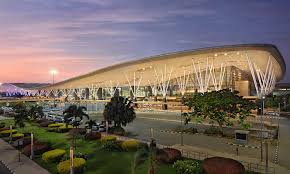This blog post is to introduce you to the dates and time zones of India. In it, we will learn how to read a date in India’s date format, what is the Indian visa how many days long, and how many hours away the two cities are.
What is a Visa?
-A visa is a document issued by a foreign government that allows a person to enter and remain in a country for a specific period of time. Indian Visa for BUSINESS TRAVELERS
-A visa can be obtained before your trip, at the airport, or in some cases, you may be able to get one on arrival.
-Different visas allow different types of visitors into the country, so it is important to research the type of visa you need before traveling.
-There are several time zones in India, so check the dates and times listed on your visa application form to make sure you are applying in the correct time zone.
What is a Visa?
A visa is a document issued by a foreign government that allows a person to enter and remain in a country for a specific period of time. There are several types of visas, each with its own requirements and restrictions. Different visas allow different types of visitors into the country, so it is important to research the type of visa you need before traveling.
There are several time zones in India, so check the dates and times listed on your visa application form to make sure you are applying in the correct time zone. If you are not sure which time zone you are in, use this
Types of Indian Visas
If you are looking to travel to India for business purposes, you may be considering obtaining a visa. The type of visa you need will depend on your nationality and the length of your stay in India. Here is a guide to the different types of Indian visas available: Indian Visa HOW TO READ DATES
Tourist visas : These are the most common type of Indian visa and are valid for up to six months. You must have a passport from your home country and must show that you have sufficient funds to support yourself while in India. Tourist visas are not generally required for people travelling for work purposes.
: These are the most common type of Indian visa and are valid for up to six months. You must have a passport from your home country and must show that you have sufficient funds to support yourself while in India. Tourist visas are not generally required for people travelling for work purposes. Business visas : If you are traveling to India to conduct business activities, you will need a business visa. This type of visa is valid for up to one year and requires documentation proving that you will be conducting business in India. Business visas are not as common as tourist visas, but they are available if you qualify.
: If you are traveling to India to
Pros and Cons of Indian Visas
If you are looking to travel to India, there are a few things to keep in mind before you apply for a visa. The country is huge and has many different time zones, so it’s important to understand the dates and times that are best for your travels.
The following are some of the pros and cons of Indian visas:
PROS:
-The country is huge, so there is plenty of opportunity to explore different areas without running out of places to visit.
-The cost of living is low, which makes it an affordable destination.
-You can find a wide variety of cuisine in India, making it a great place to experience different flavors.
-The weather is usually warm, comfortable and sunny.
CONS:
-Indian visas can be difficult to obtain if you do not have connections inside the government.
-The visa process can be lengthy and may require multiple applications.
How to Read Dates on an Indian Visa
If you are traveling to India for business purposes, it is important to be aware of the different dates and time zones that will be in effect while you are there. The following table illustrates the different dates and time zones in effect in India.
Date Time Zone 01 January 06:00 PM IST 06:00 PM GMT 02 January 07:00 PM IST 07:00 PM GMT 03 January 08:00 PM IST 08:00 PM GMT 04 January 09:00 PM IST 09:00 PM GMT 05 January 10:00 PM IST 10:00 PM GMT 06 January 11:00 PM IST 11:00 PM GMT 07 January 12:00 AM IST 12:00 AM GMT 08 January 01:00 AM EST 01:00 AM CST 09 January 02:30 AM EST 02:30 AM CST 10 January 03:45 AM EST 03:45 AM CST 11 January 04:30 AM EST 04:30 AM CST 12 January 05:15 AM EST 05:15 AM CST 13 January 06:00 AM EST 06:00 AM CST 14 January 07:30 AM EST 07:30AM CST 15 January 08.15 AM EST 08.15AM CST 16 January 09.

